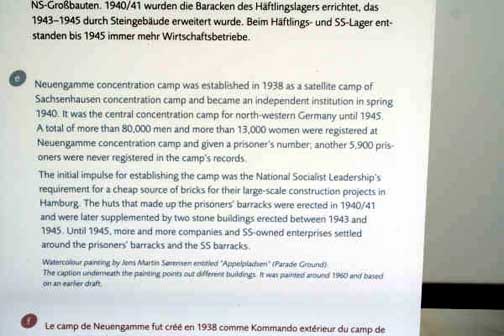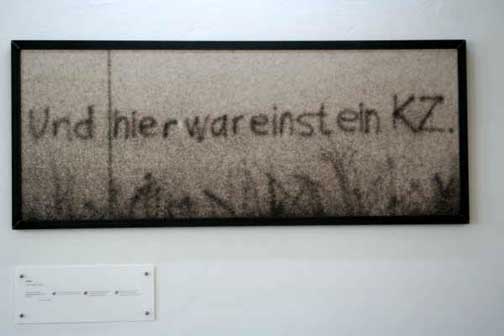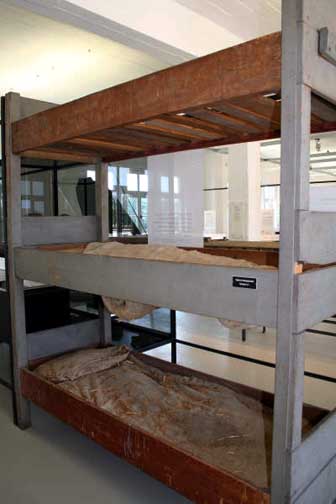Neuengamme Concentration Camp
Photos of Documentation Center
by Bonnie M. Harris

View of Neuengamme
Documentation Center, July 2006
Photo Credit: Bonnie
M. Harris
A Documentation Center at the Neuengamme
Memorial Site was set up in 1981. The photo above shows the interior
of the center.

Display board gives
the history of Neuengamme
Photo Credit: Bonnie
M. Harris
Text on display in the photo above reads
as follows:
Neuengamme concentration camp was
established in 1938 as a satellite camp of Sachsenhausen concentration
camp and became an independent institution in spring 1940. It
was the central concentration camp for north-western Germany
until 1945. A total of more than 80,000 men and 13,000 women
were registered in Neuengamme concentration camp and given a
prisoner's number; another 5,900 prisoners were never registered
in the camp's records.
The initial impulse for establishing
the camp was the National Socialist Leadership's requirement
for a cheap source of bricks for their large-scale construction
projects in Hamburg. The huts that made up the prisoners' barracks
were erected in 1940/41 and were later supplemented by two stone
buildings erected between 1943 and 1945. Until 1945, more and
more companies and SS-owned enterprises settled around the prisoners'
barracks and the SS barracks.

English translation:
And here was once a Concentration Camp
Photo Credit: Bonnie
M. Harris

Bunk beds displayed
in Museum
Photo Credit: Bonnie
M. Harris
As the end of the war neared, the SS
forced the evacuation of about 10,000 prisoners on a death march
towards Luebeck. Thousands had already been sent to Bergen-Belsen
and another 6500 prisoners had been forced onto ships in the
North Sea that were sunk by British fighter-bombers.
Commandant Max Pauly and 13 staff members
were charged with war crimes in the first British military tribunal
held in Hamburg between March 18, 1946 and May 13, 1946 for Neuengamme
staff members. Eleven of the 14 accused, including Max Pauly,
were sentenced to death and were executed on October 8, 1946.
Wilhelm Bahr, a medical orderly in the Neuengamme camp, was among
those who were convicted and then hanged. He had previously testified
for the prosecution in March 1946 at the British trial of Dr.
Bruno Tesch, who was accused of supplying Zyklon-B to the Nazi
camps for the purpose of gassing the prisoners. Bahr testified
that he had used Zyklon-B supplied by Dr. Tesch's company to
gas 200 Russian Prisoners of War at Neuengamme on the orders
of Dr. von Bergmann.
After the camp was liberated, the buildings
were used to imprison members of the SS, the Nazi political party,
and officials of the Wehrmacht and the Nazi state in the British
Civil Internment camp Number 6. The prisoners were released in
1948 when the Germans became allies with the British, and the
camp was returned to the City of Hamburg.
|